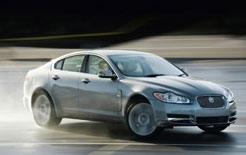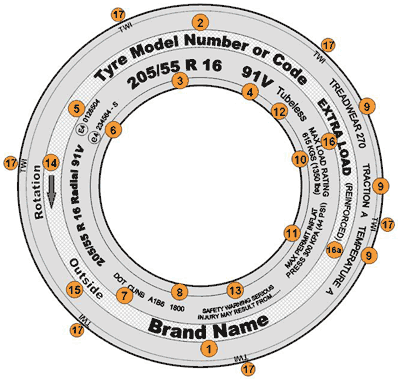
Stay in control: know your tyres
A guide to tyres
It’s vital for the safety of your drivers that their vehicles are fitted with the right grade of tyre. Important information about every car tyre’s specification is written on its sidewall.
The information is written in a code of numbers and letters, but it is easy to understand. The code is explained below. It’s becoming increasingly important to understand this safety-related information. Because there are now so many types of tyre available for different applications.
It will help reduce the risk of inadvertently fitting a tyre that’s inappropriate for the vehicle and its usage.
Also, more businesses are sourcing tyres online to help minimise running costs – and you need to know the correct size and specification to do that. The code on the sidewall will tell you all you need to know.
The leading UK tyre safety organsiation, TyreSafe, has produced a leaflet that includes an explanation of the jargon. This is its guide to cracking the car tyre code.
Understanding tyre code
1. Brand or trade name of the tyre, such as Continental, Dunlop, Goodyear, Michelin, Pirelli and so on.
2. Tyre model or pattern code, such as Sport, Pilot, Eagle.
3. Tyre size. The width of the tread in millimetres, which in this case is 205. The aspect ratio (the height of the tyre sidewall) as a percentage of the width, which here is 55% of 205mm. And the diameter of the tyre’s centre hole, expressed in inches, which is 16 inches in this instance. The letter between the numbers is the type of construction, in this case ‘R’ for Radial. So this tyre is a 205/55 R 16
4. Service description. In this example the figure 91 denotes the maximum weight capacity of the tyre according to the official load index table, which translates to 615kg. The ‘V’ indicates the speed rating of the tyre – a ‘V’ rating is suitable for cars capable of reaching a maximum speed of 149.1mph.
5. ECE (Economic Commission for Europe) Regulation 30 Conformity Approval Number. This means the tyre meets the standards of the European Regulatory Authorities.
6. EEC Noise Approval Number. This means the noise generated by the tyre is within approved European limits.
7. USA Department of Transport manufacturer’s code. This has no relevance to the UK market
8. Date of manufacture. This is important because the age of a tyre can affect its performance. The first two numbers refer to the month and the third and fourth numbers refer to the year.
9. USA UTQG (Uniform Tire Quality Grade) ratings. This has no significance in the UK.
10. USA maximum tyre loading. This has no significance in the UK.
11. USA maximum tyre inflation pressure. This has no significance in the UK.
12. Denotes tubeless construction.
13. Safety warning refers to the dangers of under-inflation or overloading and the mounting of tyres together with the risk of severe over-inflation.
14. Direction of rotation. This relates to directional tyres only. These tyres are designed to rotate in one direction only, which is indicated on the sidewall by an arrow.
15. Outer/inner sidewall refers to the mounting of asymmetric tyres only. These tyres have different tread patterns on their inner and outer sides, and must be fitted correctly.
16. Extra load version where applicable.
17. ‘TWI’ indicates the location of the Tread Wear Indicators. These raised areas at the base of the tread serve as a visual warning that the tyre is approaching or at the minimum legal tread depth.
Further information
- TyreSafe’s leaflet Car Tyres and Your Safety can be downloaded from www.tyresafe.org







